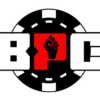This is an introduction to ZOOM poker. At the end of the day, poker is poker, however, there are some slight strategical differences that you should be aware of before jumping in with both feet.
In this article, you will learn how we should approach ZOOM, how it’s different from regular tables, and some thoughts on bankroll management.
ZOOM IS MUCH FASTER THAN REGULAR TABLES
The first (and most obvious) difference is the speed of ZOOM compared to regular tables. You get to play more hands per hour which in theory should help you improve at a faster rate.
If you’re dealt a hand that you don’t want to play, simply click the fast fold button. This will move you to another table where you’ll be dealt another hand almost instantaneously.
This doesn’t change the anything in regards to card distribution, such being dealt AA more often, but it sure may seem like it. Playing ZOOM means you no longer have to wait around for playable hands.
And due to the speed of hands dealt, you should see around four times the amount of hands per hour as you’d see at a regular table. This is a win-win for both recreational players and full-time grinders.
Recreational players hate sitting around waiting for hands – they’re at the table to have fun and hit flops.
With ZOOM, the fun players can take a seat and start splashing about immediately. It’s also more exciting for them to not have to observe hands they’re not involved in. Of course, this could also have the complete opposite effect, as some loose players may choose to fast-fold hands they would otherwise play at regular tables.
For the more serious player, playing ZOOM is advantageous based purely on the increased amount of hands. More hands per hour means a higher hourly rate, conceivably, as well as the rate at which they can improve since they will be exposed to certain situations at a much higher frequency throughout each session.
ZOOM tables are somewhat tighter, however, so typical bb/100 win rates will generally be smaller, but again, you’re dealt four times as many hands per hour, so there’s definitely a trade-off.
TABLE DYNAMICS & GAME SELECTION
The second major difference between ZOOM and regular tables has to do with table dynamics. In ZOOM, you’re moving to a different table with every new hand dealt. With player pools in the hundreds at most ZOOM games, you may see the same person only one every 25 hands.
Therefore, it will be a lot harder to gain a realistic sample of hands on your opponents compared to regular tables where you build data on the same opponents each and every hand. This could be a positive or a negative depending on how you look at it, but the fact is, you won’t have as much information on your opponents when playing ZOOM.
What this does is eliminates having to worry about the changing table dynamic of the tables you’re at and creates a different dynamic to the game altogether. If you’re a player who relies on an exploitative strategy, you’ll have some adjustments to make due to the lack of information on the player pool.
Likewise, your opponents won’t have a ton of information on you either but the important point here is to take very standard lines, almost ABC-like, in many situations. Of course, there are valid arguments for increased aggression in common situations to take advantage of the over-folding nits who are playing super by the book.
Last but not least, and probably the biggest difference, in my opinion, is the lack of game selection. When playing ZOOM, you’re part of one big player pool all rotating in and out of the same tables. You can’t choose who you play against or the seat you’re in – it’s completely random.
One could argue that this is good for the games because it eliminates “bum hunting”. And while this may be true, this is why win rates will always be higher on regular tables. And, as mentioned earlier, recreational players no longer feel the need to play a ton of hands.
The temptation just isn’t there due to the fast fold button. This doesn’t mean that their postflop decisions are any better but you’ll definitely see less ridiculous hands at showdown.
THOUGHTS ON WIN RATES
In ZOOM, bb/100 win rates are going to be lower than what you will see when playing regular tables. Is this because the games are tougher? Maybe, but there’s more to it.
It takes much longer to accumulate large hand samples on villains, so finding any exploitable deficiencies takes time. ZOOM fields can be pretty big so naturally you’re not going to have as much information.
Furthermore, when you actually do build up enough of a sample, you’ll have far less opportunities to use that information because again, ZOOM fields are huge.
What you want to look at instead is your bb per hour. Where you may average 500 hands per hour at regular 6-max tables, you may see 3 times that at ZOOM.
So at this volume, your overall bb per hour has the potential to be more than it would be at regular tables, even though your bb/100 win rate is lower.
BANKROLL MANAGEMENT
This section comes from our ZOOM coach, Asimos. When moving up, you should do it in a wise way, which will allow to move up fast and will not cause stress and tilt.
There are some bankroll management guides out there, 50 buy-in rule, 30 buy-in rule, etc. I won’t bother with those. My approach is very simple. Take a limit you beat for sure. Play 100k hands in a given month and make a profit. Every month should end up in profit.
Then use a portion of this profit to make shots for the rest of the month. Assuming your shots are going well, you can continue making shots the next month, or even move up permanently.
But don’t use all the profit in one day. Take one buy-in shots. If you lose one buy-in on a given day, move down for the day. Next day you can start by making another one buy-in shot.
If you have 3 losing shots in a row, next day start by playing at your winning limit. If you win one buy-in at your winning limit you can make another shot etc. When you have 30k hands of the next limit being in positive, you can increase by one buy-in each shot, i.e 2-3 buy-in shots. And gradually you will stay there.
Some people might say, “but this is very slow and conservative, wtf?”. I will explain myself.
If you make a 5-10 buy-in shot of the next limit and you lose let’s 50% or 30% of your roll, then it takes a lot of time to make the next shot, cause you need to move down and grind all the way again. This has a high possibility to happen since almost everyone when moves up for first time levels, doesn’t play well etc.
The problem here is that if your shot fails and you move down probably you won’t be playing your A-game since you’ll be frustrated. So instead of moving one level up, you will end up moving one level down (I have seen this happening a lot).
By following my suggestion, the time gap between your shots is not large, so you get familiarized faster with next limit. Furthermore, you avoid extreme tilt and frustration, which is one of the most important aspects in order to be a winner. And last but not least, you constantly increase your roll which is the reason you play poker (to make money).
CONCLUSION
So hopefully now you understand the main differences between playing ZOOM and regular tables, as well as a fresh perspective on bankroll management. ZOOM is a challenging game, but you can play a ton of volume quickly, and in my opinion, is the future of online poker.



